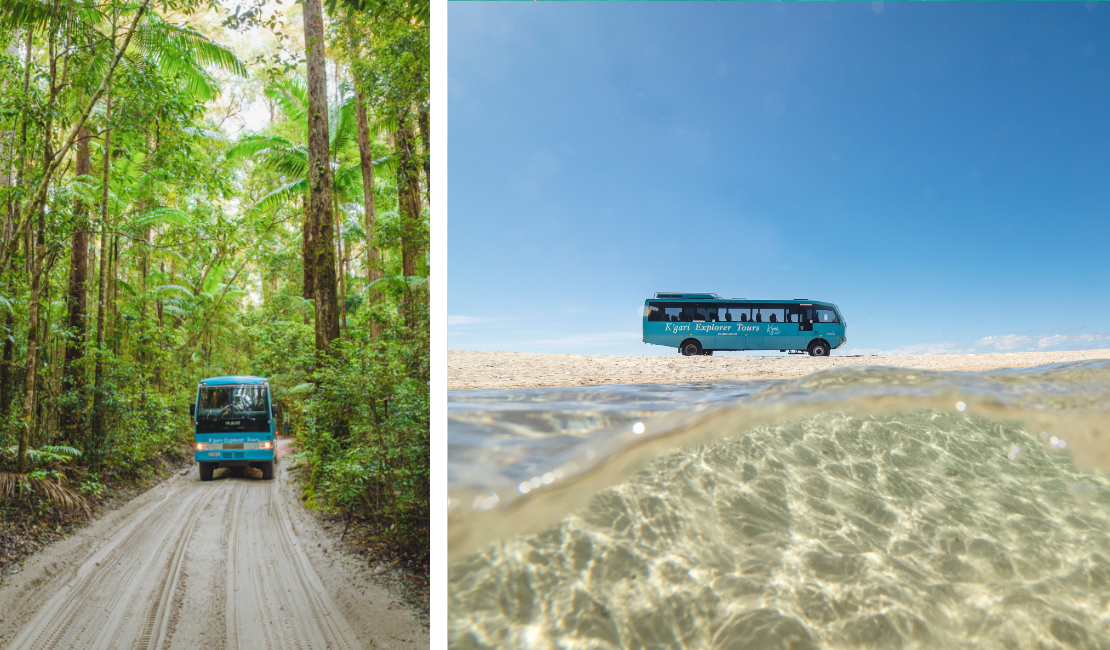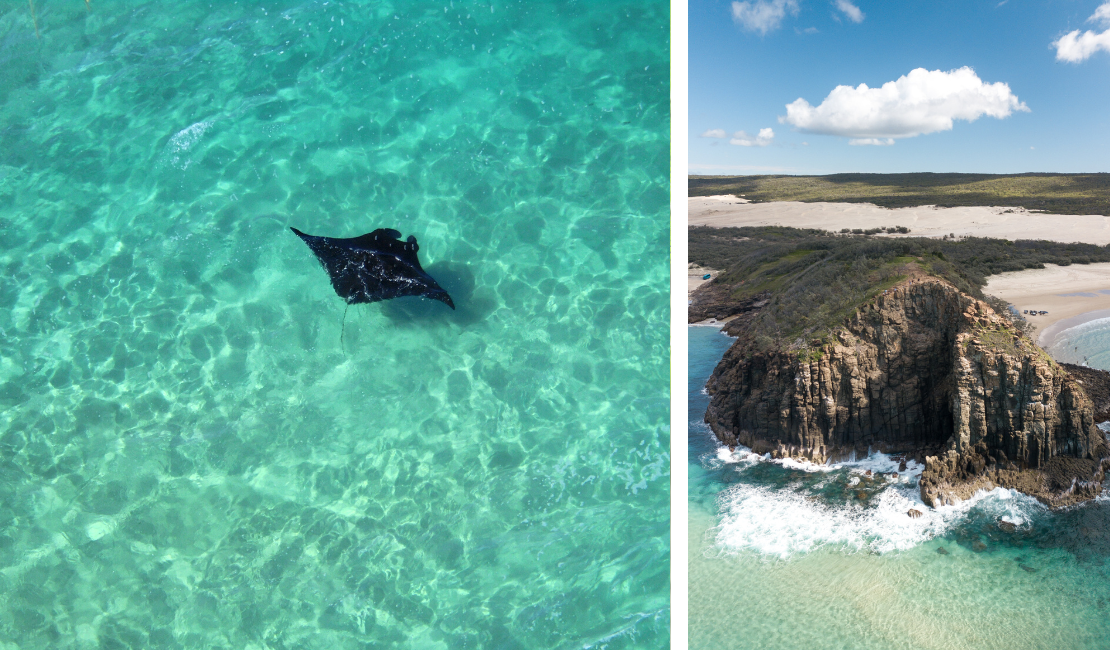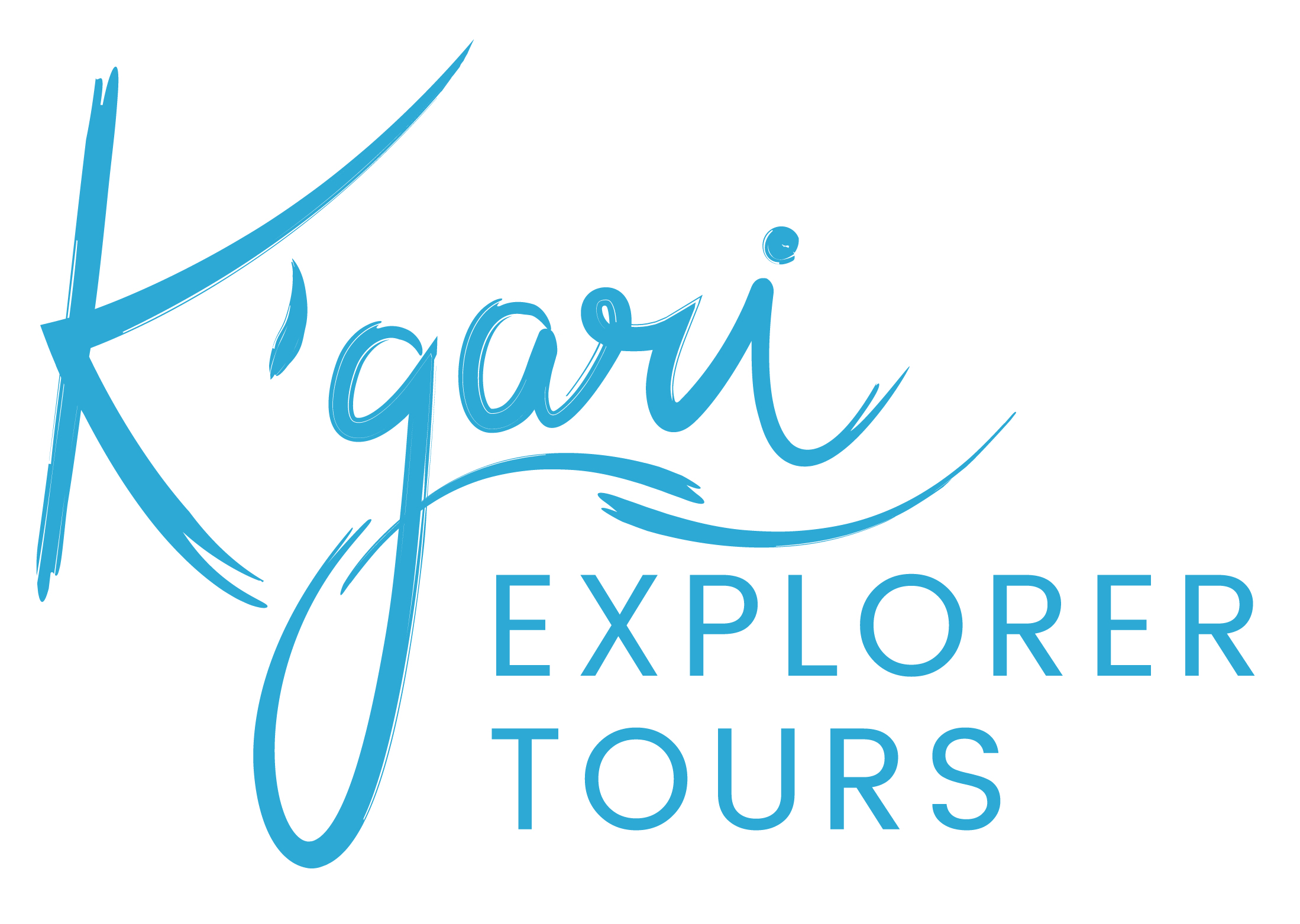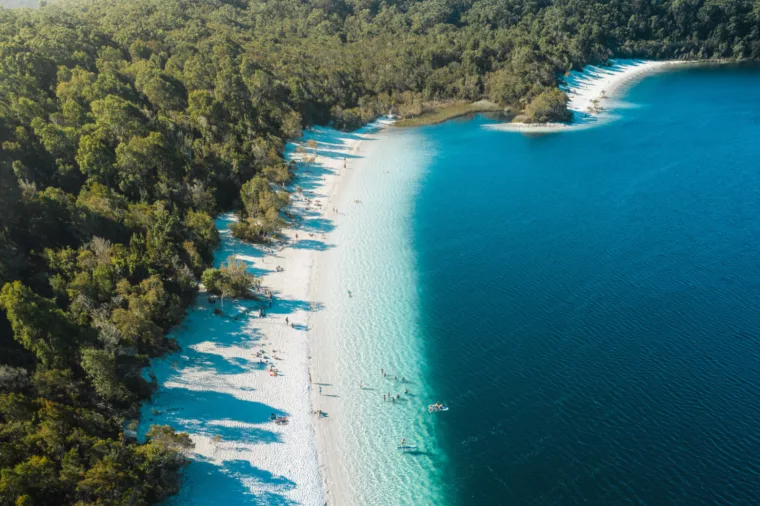- Inscribed on the UNESCO World Heritage list in 1992, K'gari (formerly Fraser Island) was recognised for its natural values, ongoing ecological and biological processes, and as an example of superlative natural phenomena. Stretching over 123 kilometres off the eastern Queensland coast, and a total of 184,000 hectares, it is the largest sand island in the world and home to an abundance of native flora and fauna.
- The name K’gari translates to ‘paradise’, by the island’s traditional owners, the Butchulla people – upon visiting this natural wonder, you’ll agree, it perfectly encapsulates this natural wonder.
- Paradise is closer than you think. Just 3.5 hours’ drive north of Brisbane, and a short 50-minute ferry crossing from Hervey Bay, you’ll be island-side in no time. PLUS, there are direct flights from Sydney and Brisbane to Hervey Bay airport… easy as that.
- Here on the world’s largest sand island, there are no roads – only sand tracks. Travellers can explore in their own 4WD vehicle, or embark on the ultimate offroad adventure with a guided 4WD tour.

K'gari (Fraser Island) is the world's largest sand island
- It is home to the purest strain of dingoes in Australia, also known as ‘Wongari’. Travellers might be lucky to spot one of these furry locals, but it’s important to remain at a safe distance from this wild species and not interrupt them in their natural habitat.
- K’gari comprises over 100 freshwater lakes, almost half of the world’s percentage.
- Lake Boomanjin is the largest perched dune lake in the world and is located right here in K’gari.
- K’gari boasts its own beach highway; one of only two places in the world where planes can both take off and land on 75 Mile beach. Take a scenic flight with Air Fraser, and get a birds-eye view of the island, as well as some lakes that are inaccessible to travellers by land.
- Fun fact! Despite 75 Miles of coastline along the eastern beach, due to the ocean’s strong current, the Champagne Pools are the only safe saltwater swimming spot! Acting as a natural jacuzzi, plunge into these aptly-named swimming holes as waves crash over the volcanic rock, creating a bubbling effect – just like Champagne. Cheers to adventures in an island paradise.

Champagne Pools, K'gari (Fraser Island) - Watch out for the whales. Did you know that K’gari is the only landmass that breaks a whale’s migration? From July to October every year, thousands of humpback whales travel up the east coast (Keep an eye out for their spectacular breaches), around the northern tip and settle into the calm, sheltered waters of the Great Sandy Strait, to play, learn some important life skills, and to nurture to their young.
- Hervey Bay was named the world’s first Whale Heritage Site in 2020, regarded for its sustainable whale-watching practices.
- Wander amongst the half-a-century-year-old satinay trees, in the breathtaking subtropical rainforest. Marvel at the lush King ferns and delightful dappled rays of sunlight that peek between the palms. It’s the only place in the world where a rainforest can grow from the sand, at elevations of over 200m.

K'gari (Fraser Island) is the only place in the world where rainforests grow from sand - Washed ashore by a cyclone in 1935, the SS Maheno Shipwreck is a spectacle on the eastern coast of the island. Once a luxury cruise liner, then acting as a hospital ship during WWI, over three stories are buried below the sand, making these rustic remains a historic sight to see.
- Eli Creek, the largest creek on the eastern beach of K’gari, with over 4.2 million litres of fresh water flowing into the ocean every hour... enough to fill Sydney Harbour 20 times! Take a tube and float along this tranquil waterway, under the shade of the pandanus trees.

Eli Creek, K'gari (Fraser Island) - The name you’ve all been waiting for, the oh-so-beautiful Lake McKenzie. With breathtaking, turquoise blue hues, crystal-clear depths and encircled by pristine white silica sand, you’ll be in a haven of island paradise.
- Lake Wabby is an extraordinary, emerald-green oasis, nestled at the base of the Hammerstone sand blow. It is also the island’s deepest lake, reaching a depth of almost 12 metres.
- Birds are the most abundant form of wildlife seen on the island. You’ll have the chance to spot some of the 384 migratory and coastal species of birds that have been recorded.
- Witness the striking colours of the Pinnacles! Located along 75 Mile beach, you’d think these were cliff formations, but in fact, it’s approximately 72 different shades of red, orange and yellow sands towering from above.
- Located along 75 Mile Beach, Indian Head is the island’s most easterly point. A plethora of marine life is often spotted in the clear shallows at the base of this rocky headland, including turtles, fish and stingrays.

K'gari (Fraser Island) is known for its rich marine life and biodiversity - The Great Sandy Biosphere, along the island’s west coast, was awarded Reserve status in 2009, placing the Great Sandy Region in the same class as the Galapagos Islands, Central Amazon, the Everglades and Uluru. The area consists of a series of small islands and a mosaic of habitats including seagrass meadows, sandflats, mangroves, coral reefs and rocky shores, creating the perfect environment and feeding grounds for numerous species of marine life including dugongs, sea turtles and dolphins.
17th January, 2023




